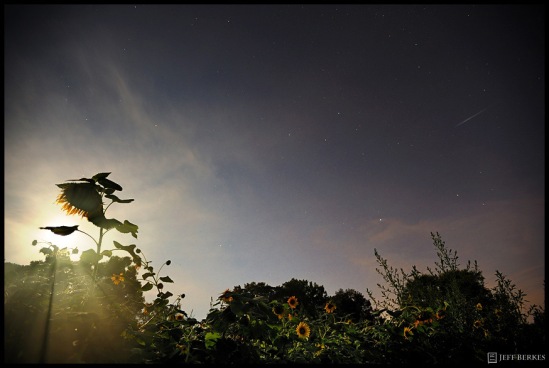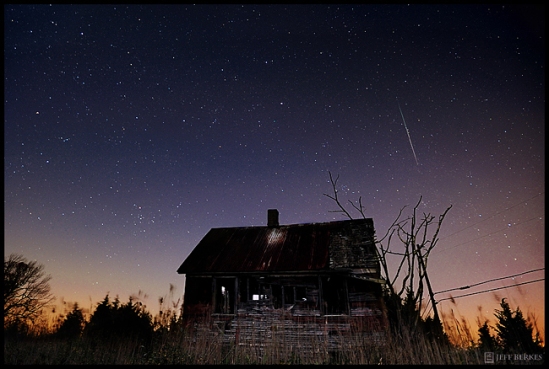
Perseid Meteor falling over the Pacific Ocean south of Hilo
The Perseids are here! As seen on National Geograhpic’s website. Every year we enter a swath of debris from Comet Swift-Tuttle sparking these “falling stars”. Last year was a bust with a full moon washing out all but the brightest ones. As pictured below..

Perseid Meteor and Full Moon 2011
Unlike last year, this year should be much better. The moon rises in the early morning as a crescent which is better than the bright full moon. The best place watch is away from city lights where the light pollution takes over our night sky. Where ever you live just take a 30 minute drive out-of-town. This year we have a bonus! Venus and Jupiter will align with the slender crescent moon in the eastern sky before sunrise in a dazzling morning sky show with a flurry of Perseid Meteors! The best time to look is between 1am and 4am (NE) when the radiant is the highest in the sky. featured below…

I have had the honor of photographing this meteor shower multiple times from many places. Last year I photographed it from Utah, Arizona and Pennsylvania and I’m planning on extending that streak to a couple additional states this weekend. Here are a few shots from past meteor showers.
Utah Desert 2011.
Delta Aquarid Meteor Shower 2008

Quadrantid Meteor Shower 2012
Quadrantid Meteor Shower – Florida Keys

Perseid Meteor Shower 2010
Perseids – Big Island of Hawaii

Leonids 2011
Leonid Meteor Shower – New Jersey 2011

Volcano and Perseid Meteor 2010
The Kilauea Volcano Caldera, the Milkyway and a Perseid Meteor , Hawaii

Lyrids 2012
Lyrid Meteor Shower 2012 – Virginia

Quadrantids in the Florida Keys 2012!
On a single night of the year you can see a falling star, but there are nights where the chances increase by a ton! The Perseids start in late July and last until about the 18th of August, the greatest activity of the shower will occur this weekend so be sure to go outside tonight and make a few wis
You can see these meteors in any direction in the sky. Make sure you bring a camping chair or blanket and look straight up without focusing on any single area in the sky. If you choose to photograph the shower make sure you use a lens which can cover a good portion of the sky and bring lots of snacks! Try not to look at cell phones or use flashlights that aren’t “red lights” this damages your night vision. When you first arrive at your sight make sure you allow 10-15minutes for your eyes to adjust to the night sky. Do not look at or into any light sources, it will tak you another 15 minutes for your eyes to adjust into (night mode).
Check back for a follow up to the shower and happy meteor hunting!












